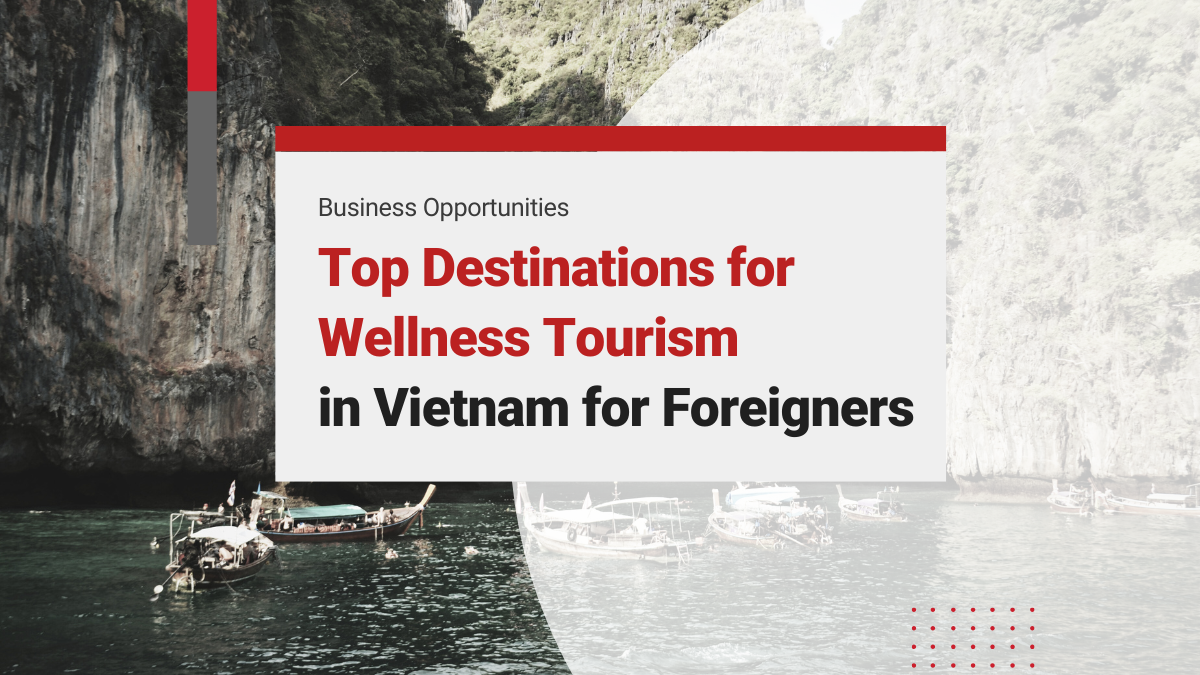Registering a trademark in Vietnam is essential for any business—especially foreign investors—to secure legal ownership of their brand. Without a formal Vietnam trademark registration, competitors or counterfeiters could hijack your mark, causing brand confusion and losses. A registered trademark grants you exclusive nationwide rights to your brand symbol, making enforcement against infringers much stronger. In practice, the registration process involves formal and substantive examinations and typically takes 1–2 years to complete. Recent law changes (effective 2023–2024) have introduced new trademark categories (including sound marks), tightened filing rules, and increased transparency (all applications are now published on WIPO’s Global Brand Database).
Searching for Trademark solutions for your business in Vietnam? Check out InCorp Vietnam’s Trademark Registration Services
What is a Trademark?
A trademark is any distinctive sign that identifies and distinguishes the goods or services of one business from those of others. In Vietnam, this includes brand names, logos, slogans, shapes, colors, or even sounds, as long as they are unique and visible. For example, a company could register a word mark (like “Acer” or “Samsung”), a logo, a three-dimensional bottle shape, or even a sound clip (since 2023) as a trademark. The law requires a trademark to be “capable of differentiating” your products or services from others, meaning it should be distinctive and not generic.

Following Article 4.16 of the Vietnam IP Law, a trademark is elucidated as a sign employed to distinguish the goods or services of disparate organizations or individuals. The legal framework in Vietnam classifies trademarks into five distinct types:

Why is Trademark Registration important in Vietnam?
Secure Exclusive Rights
A registered Vietnam trademark gives you exclusive legal ownership of the mark nationwide. This means you alone can use the mark for your goods/services, and you can sue anyone who uses it without permission. Without registration, your rights are weak; Vietnam follows a first-to-file system, so whoever applies first gets the trademark. Registering early prevents opportunistic competitors or “trademark squatters” from claiming your brand.
Prevent Brand Confusion
A registration helps prevent others from confusing customers with similar marks. Public registration makes it easier to enforce your rights: third parties must check your registration before adopting a similar mark. If they do infringe, the law presumes your ownership, so you need only show your certificate. This protection deters counterfeits and knock-offs in the market. For example, using the ® symbol signals your mark is protected, warning imitators and reassuring customers of authenticity.
Enhance Business Value.
A trademark is a valuable intangible asset. As it gains goodwill and recognition, the brand itself can be licensed, franchised, or sold to generate revenue. A strong registered mark can be used as loan collateral because banks view it as a concrete asset. In effect, Vietnam trademark registration boosts your brand’s value and can improve financing opportunities. Customers tend to trust known brands, so a registered mark helps build loyalty and repeat business.
Legal Remedies Against Fakes
Registration provides powerful enforcement tools. If counterfeit or unauthorized goods bearing your mark appear, you can initiate civil lawsuits or use customs seizures on imports. Online platforms (like Amazon) typically require proof of registration for brand registry programs; without a registered mark you have little recourse. In Vietnam’s courts or through administrative agencies, you can stop infringers from using a confusingly similar mark and even claim damages or profit disgorgement.
Priority and Ownership Claims
Filing early secures a priority date. Under the Paris Convention and local rules, your filing date locks in your rights. If someone later tries to register a similar mark, your registration will block them. The amended law and new regulations explicitly recognize the priority of first filings, so timely registration “safeguards your ownership claims” and gives national recognition to your priority right.
In short, Vietnam trademark registration is the foundation for protecting your brand identity as you grow. It is the first line of defense against copycats and the key to asserting your rights in Vietnam’s expanding market.
Key Updates in Vietnam’s Trademark Law
Recent legislative changes have modernized Vietnam’s trademark regime. Notable updates include:
Expanded Types of Marks: Effective January 1, 2023, the amended IP Law explicitly allows new mark types. Notably, sound marks (audio logos with a file and notation) and three-dimensional shapes are now registrable. (Scent and taste marks still cannot be registered, as they are not “visible”.)
Bad Faith Grounds: The IP Law now explicitly bars bad-faith filings. If it is proven that an applicant knowingly copied another’s mark, the application can be refused or even invalidated later. The implementing regulations (Circular 23/2023) clarify that bad faith means “abusing” known marks or brand names in filing. This change helps combat trademark piracy on bad-faith grounds.
Public Disclosure: As of January 1, 2024, Vietnam began publishing all new trademark applications immediately on the WIPO Global Brand Database. Under Article 110 of the amended law, the IP office publicly discloses pending filings (even those not yet formally accepted) to increase transparency. This lets businesses monitor upcoming marks and oppose questionable filings.
Digital Procedures: The IP Office (formerly NOIP) now prioritizes online filings. For example, a 50% fee reduction is available for applications filed electronically through 2025, and well-prepared online submissions may be processed faster. Deadlines for submitting documents have also been relaxed: Circular 23 removed the rigid 1-month deadline to file a power of attorney, instead allowing up to 2 months from an office action.
Harmonization with Nice Classification: Vietnam has adopted the latest Nice Classification (12th edition, effective 2025) for goods/services classes. Applicants now must select from the updated class headings and terms. Multiclass filings are allowed; each additional class incurs a relatively small extra fee (about VND 730,000 per extra class).
These updates mean foreign businesses must stay informed. For instance, if you plan to register a sound logo (like Intel’s chime), you now can under Vietnam law. Also, when preparing your application today, know that Vietnam is more open and digital – you should file online, keep track of the WIPO database, and expect slightly different procedural requirements than a few years ago.
Read More: How to Register a Trademark in Vietnam for Your Business?
The Vietnam Trademark Registration Process
Registering a trademark in Vietnam follows a multi-stage process. Below is an overview of the typical steps and timeline:
- Prepare and File Application. You (or a local agent) file a trademark application with the National Office of Intellectual Property (IP Vietnam) in Hanoi (or its Ho Chi Minh City branch). The application must include:
- A reproduction of the trademark (logo/image in exact colors or B/W). For 3D marks, show all perspectives; for sound marks, include an audio file plus musical notation.
- A list of goods/services covered, classified under the Nice system (Vietnam uses Nice 12th edition).
- Applicant details and signed power of attorney (if filed via agent). Note: If the POA is not ready at filing, IP Vietnam will issue an office action requiring it, normally within two months (extendable).
- Priority documents (certified copy) if you’re claiming an earlier filing date from another country (Paris Convention).
- Fee payment proof for the official filing fee (around VND 1,000,000 to 2,000,000 per class for online filing in 2025).
It’s highly recommended to conduct a trademark clearance search (via WIPO’s Global Brand Database or local databases) before filing, to avoid obvious conflicts. While Vietnam doesn’t require a prior search, failing to do so risks refusal due to a similar earlier mark.

- Formality Examination (≈1 month). The IP office checks that your application is complete and in correct form. If anything is missing (like an unclear mark image, class error, or missing POA), they will issue a formalities office action. You typically have 2 months to respond and correct any defects. Once all formality requirements are met, IP Vietnam issues an Acceptance Notification with an official filing date.
- Publication (≈2 months). Within ~2 months of formal acceptance, the application is published in the Industrial Property Gazette (and on WIPO Publish). This starts a 5-month opposition period. During this period, third parties may file oppositions if they believe your mark infringes theirs. (Vietnam has no pre-grant oppositions in the initial filing stage — oppositions come only after publication.) If an opposition is filed, it must be resolved before registration.
- Substantive Examination (≤9 months). Once the opposition window closes, IP Vietnam examines the mark substantively against legal criteria and prior registrations. This may take up to 9 months. They check for genericness, descriptiveness, or similarity to earlier marks. If any issues arise (such as a relative conflict with another registered mark), they notify you to respond. You can submit arguments or evidence (for example, a letter of consent from the other party). If resolved in your favor, the mark proceeds. Otherwise it may be refused.
- Registration Certificate (≈1 month after exam). If no refusal is issued (and no successful opposition), IP Vietnam issues a Decision to Grant and, after payment of the registration fee, issues a certificate of registration. The entire process—from filing to certificate—typically takes 12–18 months in a smooth case. (Due to heavy workloads, many marks today take closer to 16–24 months.)
- Post-Grant: Use and Renewal. Once registered, your mark is valid for 10 years from the filing date. You may then renew it indefinitely every 10 years. (A renewal application is filed 1 year before expiry, and there is a 6-month grace period with fees if you miss the deadline.) It’s crucial to use the mark continuously on your goods/services. Under Vietnam law, if a registered mark is not genuinely used for 5 consecutive years, any party can petition to cancel it for non-use. In practice, keeping sales invoices, ads, or import records bearing the mark is how you prove use and maintain validity.
Required Documents and Fees
A Vietnam trademark application dossier typically includes: – Application Form (No. 01-TTĐK) with applicant’s data.
– Power of Attorney (POA) signed by the applicant (if a local agent files).
– Samples/Reproductions of the Mark (in exact colors or black & white). For special signs (flags, emblems), include authorization documents.
– List of Goods/Services (with Nice classes).
– Priority Documents if claiming priority (certified copies of the foreign filing).
– Fee Payment Proof for the filing fees.
The official fees depend on the number of classes and items: for one class (up to 6 goods/services), the basic filing fee is roughly VND 1,000,000–2,000,000 (about US$40–80). If you include more than 6 items in a class, extra fees apply (about VND 150,000 per additional item). After publication, the registration fee is about VND 360,000 (≈US$14) for the first class, plus smaller sums for each additional class. (Because of Vietnam’s 2024–2025 stimulus measures, government fees have been temporarily reduced: for instance, online applications currently enjoy a 50% discount on filing fees.)
In addition to official fees, foreign applicants must usually engage a local IP agent. Agent (lawyer) fees vary, but often start around US$100–200 for a straightforward application. These cover document preparation, correspondence, and handling any office actions. Working with an experienced Vietnam trademark firm is highly recommended to ensure all formalities (like translations and notarizations) are done correctly.
Check out InCorp Vietnam’s Trademark Registration Services
Examination and Registration Timeline
Vietnam follows a two-stage examination system:
- Formality Review (1 month). Checks paperwork and whether the mark can be represented clearly. If everything is in order, a filing date is granted. If not, an office action invites fixes.
- Publication and Opposition (2+5 months). Once accepted, the mark is published in the Official Gazette (within ~2 months). A 5-month opposition period follows. Any opposer must submit evidence (e.g. prior rights) for the office to consider.
- Substantive Examination (~9 months). IP Vietnam examines absolute grounds (distinctiveness, public order issues) and relative grounds (conflicts with earlier marks). Under law, this should finish in 9 months, but in practice it can stretch due to workload.
- Decision to Grant (≈1 month after exam). If all goes well, the office issues a registration decision. You pay the grant fee and the official certificate is issued.
In total, a straightforward application may take as little as 12–14 months, but many cases run 16–24 months due to back-and-forths and heavy filings. Applicants can track progress on IP Vietnam’s online portal. Starting early is key, as changes later (for example, adding classes of goods) are not allowed once filed.

International Trademark Protection
If you plan to market beyond Vietnam, consider the Madrid Protocol. Vietnam joined Madrid in 2006, so after securing (or applying for) a home-registered mark, you can extend protection to Vietnam via an international application through WIPO. This can be simpler than filing locally in each country. However, until your mark is registered in Vietnam, an international registration designating Vietnam won’t mature into protection here. In all cases, whether filing locally or internationally, Vietnam trademark registration provides the legal basis to enforce your mark in Vietnam.
Post-Registration: Use and Renewal
Once registered, always use your trademark in commerce. In Vietnam, failure to use it (without valid reason) for 5 years in a row is grounds for cancellation. To maintain rights, affix the ® symbol and use the mark on products, packaging, invoices, ads, etc.
The registration certificate is valid for 10 years from the filing date. Before it expires, the owner must file a renewal (including renewed power of attorney and fee payment). Renewals can be done indefinitely in 10-year increments, but missing the deadline can lead to loss of rights. Vietnam does not grant extension of protection beyond the renewal term, so mark your calendar well in advance of each 10-year anniversary.
Common Challenges and Limitations
Vietnam’s trademark system is robust but has quirks:
- Class Immutability. The classes and goods you choose at filing are locked in. You cannot add classes or change goods list later, so careful planning is crucial.
- Enforcement Costs. Protecting a mark is largely the owner’s responsibility. Litigation or opposition proceedings can be time-consuming and costly, especially in contested cases. Having pre-filing search results and negotiation options (like co-existence agreements) can save headaches.
- Renewal Vigilance. Unlike some countries, Vietnam will delete your mark from the register if you miss the renewal deadline. There’s no automatic reminder, so you must keep track every 10 years.
- Limited Patent Protection. Remember that trademark law only protects your brand, not your products or inventions. If you have a novel product or design, you’ll need patents or design registrations separately.
- Genericization Risk. If a mark becomes a generic term (like “Escalator” once was), it can lose protection. Brands must actively prevent generic use and educate consumers on proper usage (always use the trademark as an adjective, e.g. “KODAK® camera”).
Conclusion
In Vietnam’s fast-growing market, Vietnam trademark registration is indispensable. It secures your brand as a legally protected asset, deters knock-offs, and lays the groundwork for expansion. The process can be complex for newcomers, especially with recent legal updates (sound marks, publication rules, etc.). Therefore, it’s wise to work with experienced local counsel or agents who understand the Vietnamese system. By registering your trademark properly and early, you invest in the long-term value and security of your business in Vietnam.
Still confused about Trademark Registration in Vietnam? Talk to our experts now!

clients worldwide

professional staff

incorporated entities in 10 years

compliance transactions yearly
Learn the Right Setup for Business
Expansion in the Vietnam
Frequently Asked Questions
How do I make a registered trademark?
- To make a registered trademark in Vietnam, you must file an application with the Intellectual Property Office of Vietnam (IPVN). The application should include a trademark sample, a list of goods or services, and the applicant’s details. After submission, the process includes formal examination, substantive examination, and publication, and usually takes 12–18 months. Once approved, the trademark is protected for 10 years and can be renewed indefinitely.
Is Vietnam first to file trademark or first to use?
- Vietnam follows a "first-to-file" trademark system. This means that trademark rights are granted to the first person or entity to file a valid trademark application, regardless of prior use. Prior use does not establish legal ownership unless the mark is recognized as "well-known" under Vietnamese law. Therefore, early registration is crucial to secure trademark rights in Vietnam.
What are the 4 types of trademarks?
- The four types of trademarks are: 1. **Generic marks** – Common terms for products or services that cannot be trademarked (e.g., “computer” for computers). 2. **Descriptive marks** – Describe a feature or quality of the goods/services; they can only be registered if they acquire distinctiveness. 3. **Suggestive marks** – Hint at or suggest the nature or quality of the goods/services and are inherently protectable (e.g., “Coppertone” for sunscreen). 4. **Arbitrary or fanciful marks** – Words or symbols with no relation to the goods/services; they receive the strongest protection (e.g., “Apple” for computers or “Kodak” for cameras).






